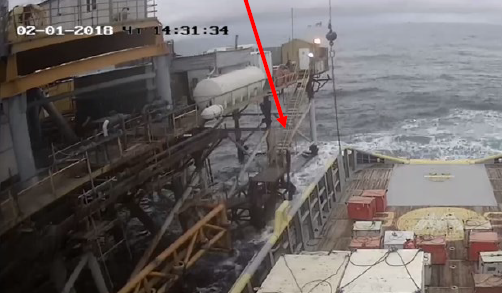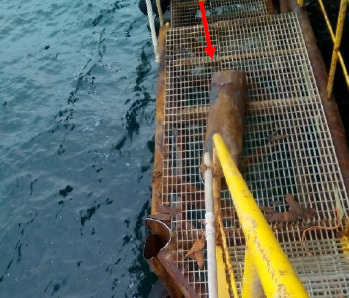Vessel/Platform Collision – Mooring Bollard Broken by Vessel
What happened?
A platform supply vessel (PSV) approached a platform to deliver the cargo via snatch lift. After starting cargo operations, it appeared that the crane did not have enough boom reach, so the vessel was taken closer to the platform (at around 1 m distance). There were 2m waves at the time.
The vessel’s stern collided with the platform mooring bollard which was damaged. No one was injured. This damage was allegedly not noticed at the time by the crew, and was identified and reported by the client at a later stage.


What went wrong? What were the causes?
Our member notes that this incident happened recently and is under investigation. Detailed information and additional lessons learned, if any, will be communicated at a later date. Our members’ initial findings were as follows:
- Given the unfavourable operational conditions, there was excessive exposure to risk, possibly driven by inadequate planning. The operation should have stopped when conditions were found unsafe;
- Concerns had been raised previously, relating to the absence of fenders and mooring buoys around the platform, and regarding the limited reach of the crane. These had not been addressed. Vessel management should keep their fleet management informed of operational hazards and enable corrective actions with clients and other 3rd parties, as needed.
What actions were taken? What lessons were learned?
Ensure that there is properly documented and agreed guidance available on methods of safely approaching platforms, on escape routes and on go/no-go zones, particularly when new locations are involved.
Members may wish to refer to the following incidents:
Safety Event
Published: 19 March 2018
Download: IMCA SF 06/18
IMCA Safety Flashes
Submit a Report
IMCA Safety Flashes summarise key safety matters and incidents, allowing lessons to be more easily learnt for the benefit of all. The effectiveness of the IMCA Safety Flash system depends on Members sharing information and so avoiding repeat incidents. Please consider adding safetyreports@imca-int.com to your internal distribution list for safety alerts or manually submitting information on incidents you consider may be relevant. All information is anonymised or sanitised, as appropriate.
IMCA’s store terms and conditions (https://www.imca-int.com/legal-notices/terms/) apply to all downloads from IMCA’s website, including this document.
IMCA makes every effort to ensure the accuracy and reliability of the data contained in the documents it publishes, but IMCA shall not be liable for any guidance and/or recommendation and/or statement herein contained. The information contained in this document does not fulfil or replace any individual’s or Member's legal, regulatory or other duties or obligations in respect of their operations. Individuals and Members remain solely responsible for the safe, lawful and proper conduct of their operations.
